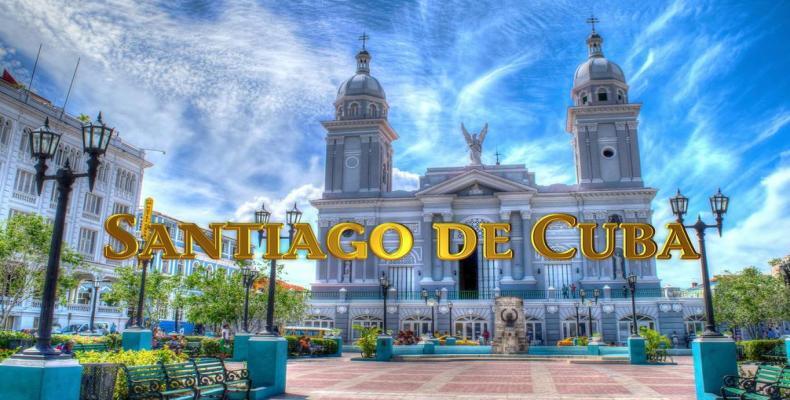Havana, July 25 (RHC) -- Santiago de Cuba, founded by conqueror Diego Velázquez on July 25th, 1515, was one of the first seven villages established by the Spaniards in Cuba.
In 1494, on his second voyage to the so called ‘New World’, Columbus visited its harbor, which he called Puerto del Rey. Until 1550 it was the island's capital. During the 16th and 17th centuries Santiago was the object of devastating attacks by corsairs and pirates, being one of the hardest hit urban areas.
In the 18th century the city showed signs of economic and cultural progress with the promotion of coffee plantations in its surroundings, the introduction of new agricultural techniques, the promotion of culture and art, and the introduction of new customs brought by French settlers who immigrated fleeing the Haitian Revolution. Its population received the sociocultural integration of Spanish, French and Africans.
The contribution and decisive participation of Santiago de Cuba in the independence wars against Spanish colonial rule was notable. Outstanding patriots and revolutionaries, such as Donato Mármol, Antonio José Maceo, José María Rodríguez (Mayía), and others, come from Santiago on the stage of the struggles against Spain. In 1895 Santiago de Cuba hosted the remains of the top organizer and guide of the independence war, José Martí, buried at the Santa Ifigeni" cemetery, where those of Carlos Manuel de Céspedes and Pedro Figueredo, composer of the National Anthem, were already found .
Fidel Castro and other young rebels stormed the Moncada military headquarters on July 26, 1953 to defeat dictator Fulgencio Batista. On November 30, 1956, the July 26th Movement organized with Frank País the support for the landing of the expedition members the Granma yacht in 1956. In Santiago de Cuba historical leader of the Cuban Revolution, Fidel Castro, proclaimed the true and definitive triumph of the Cuban Revolution on January 1st, 1959, from the City Hall.
Some landmarks in the city include:
Cespedes Plaza: Bounded by a high-value architectural complex made up of the Diego Velázquez House-Museum, the Metropolitan Cathedral, the old Town Hall (today the headquarters of the provincial government) and the Casagranda hotel. Reference sites (Casa de la Trova and the Bacardi museum) are located in its surroundings.
Padre Pico Street: Natural viewpoint, the only street with steep steps in the country. Set the boundary between the low and high areas of the city and descend to the Tivolí neighborhood, where the city's famous carnival takes place.
Cathedral of Nuestra Señora de la Asunción: The church has quite a history, full of disasters and reconstructions, the original one was built in 1555, destroyed by the English in 1662 and rebuilt between 1666 and 1670, damaged again by earthquakes in the 18th and 19th centuries. The cathedral, today a National Monument, displays a mixture of styles, the result of a series of changes made in 1922 by architect Segrera, who added the bell towers. A marble angel was placed over the main entrance and statues of Christopher Columbus and Bartolomé de las Casas.
Castle of San Pedro de la Roca del Morro: Eastern Santiago de Cuba, the island’s first capital, also faced the attacks of corsairs and pirates, attracted by the country’s wealth, which motivated the design and construction of works capable of protecting the interests of the Spanish crown.
A Roman-style military building with 2 different levels began to be built in the 16th century and ended 2 centuries later. Today it houses the Piracy Museum and has been a cultural heritage of humanity since 1997. Its main designer and architect was the famous Italian military engineer Juan Bautista Antonelli, responsible in previous years for the fortification works of San Cristóbal de La Habana.
Moncada Barracks: The Governor of the Oriental Department began in 1859 the construction of this prison-fortress, which had several rooms in the basements used as dungeons, but at the beginning of the Ten Year War it was turned into a shelter for troops and a fortified bastion, renamed it with the name of Reina Mercedes in honor of Alfonso XII. From then on, the facility was a fortress, a sanatorium for Spanish soldiers and a prison for Cuban patriots, including Major General Guillermón Moncada, after whom the fortress was named after the Spanish left the island.


